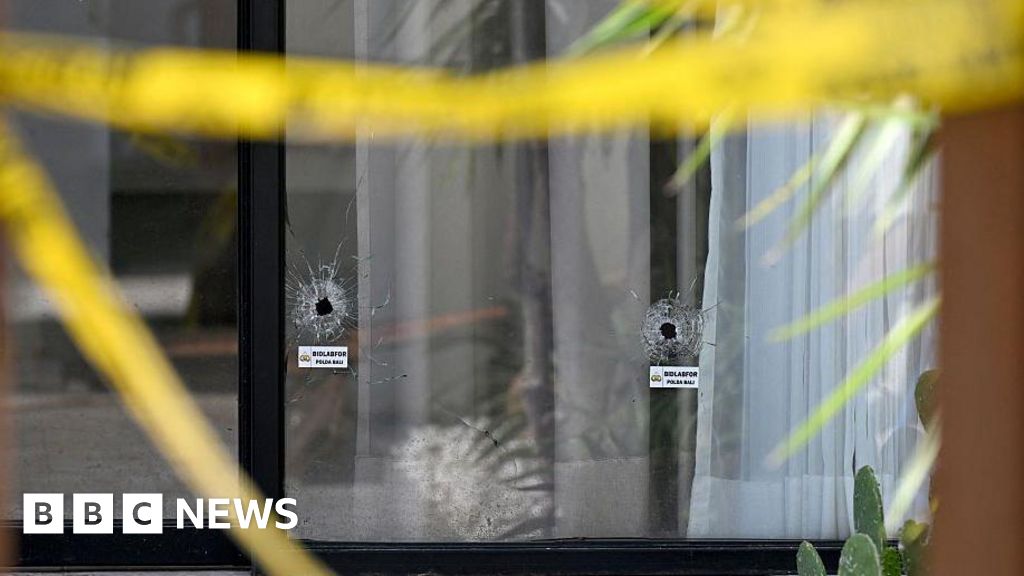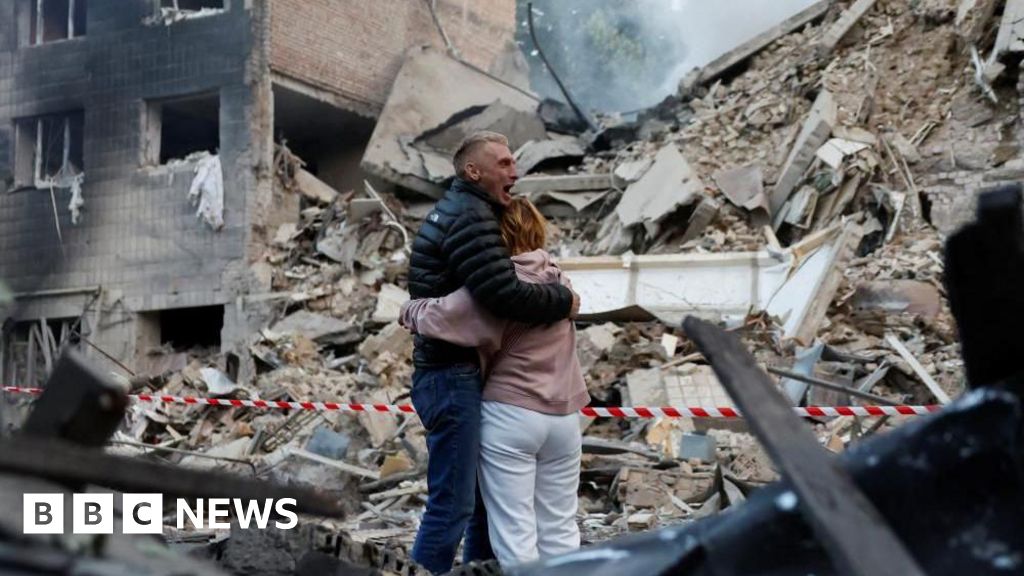ARTICLE AD BOX
By Manisha Ganguly and Joe Inwood
BBC News
Image source, Reuters
Image caption,Munitions experts believe a missile that fell near Kramatorsk station was a cluster bomb
A BBC investigation has found clear evidence that a cluster bomb, banned by many countries under international law, was used in an attack on Kramatorsk railway station in Ukraine.
These weapons deliver a payload of bomblets that spread out and explode over a wide area.
More than 50 people died when the missile struck the station, which was crowded with people trying to leave the east of the country, on 9 April.
More than 120 countries have agreed to a treaty prohibiting the use of these weapons - but not Russia or Ukraine.
What evidence is there of cluster weapons?
BBC journalists who visited the station after the attack found clear patterns on the ground consistent with the use of a cluster-munitions warhead.
A spray pattern on the ground on the concourse outside Kramatorsk station suggests possible cluster munitions
The resulting multiple explosions typically scatter fragments around the site of the main impact of the missile, leaving tell-tale pockmark indentations where each one makes an impact.
A building near the station also showed such a scatter pattern along the side, near a bigger hole created in the wall.
Washington Post reporters, who were on the scene very soon after the strike, were told by witnesses that they had heard "an initial explosion followed by four to five blasts". This sound pattern is consistent with that of a cluster bomb.
Remains of a Soviet-era Tochka-U missile were found in the aftermath of the attack.
It's a short-range single warhead ballistic missile that can be fitted with a cluster warhead that carries 50 bomblets, which can detonate upon impact.
There is evidence that Russia has previously deployed these missiles in the current conflict, although Ukraine also has this weapon in its arsenal.
Russia previously denied using it in the Donetsk and Luhansk regions of Ukraine, but these claims are disputed.
What do military experts say?
Sidharth Kaushal, a missile expert at the Royal United Services Institute (Rusi), said: "The impact mark is pretty consistent with a sub-munition like the 9N24, a Soviet-era cluster munition that can be carried by the Tochka missile."
He pointed to the fairly shallow central crater and the radiating fragmentation marks that appear to be in one direction, which is consistent with sub-munitions of that shape.
A closer view of the radiating pattern left outside Kramatorsk station
"This is very consistent with the impact point of a fragmentation sub-munition - so a cluster bomb was used."
We've spoken to two other experts who agree with these findings.
The BBC has tried to identify the launch site for the missile, using social media video and images, but has so far been unable to do so.
Why are cluster munitions banned?
The use of these weapons has drawn widespread criticism from human-rights groups due to the damage they cause and the specific harm they pose to civilians in conflict zones.
These weapons can release as many as 50 bomblets in a radius up to 400m, with the potential to lead to high civilian casualties in heavily populated areas.
There is also the risk they pose when some of the sub-munitions don't detonate, which is common with old Soviet missiles that are decades out of date, as the Tochka is.
The 2008 Convention on Cluster Munitions prohibits the use of these weapons, but Russia and Ukraine are not signatories to the treaty.
Earlier in the conflict, there were accusations that Russian forces were using cluster munitions in the Kharkhiv area, leading the International Criminal Court (ICC) to announce it was opening an investigation.

 3 years ago
41
3 years ago
41








 English (US) ·
English (US) ·